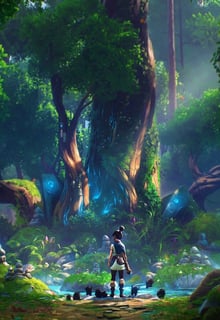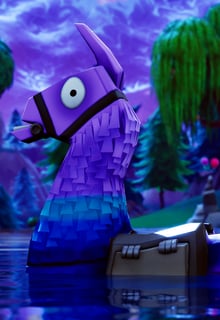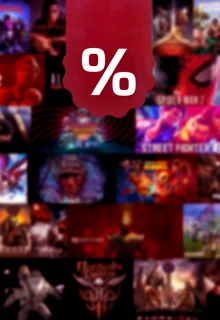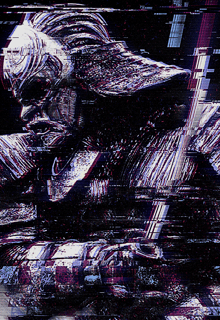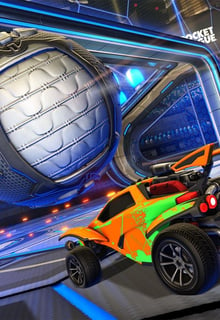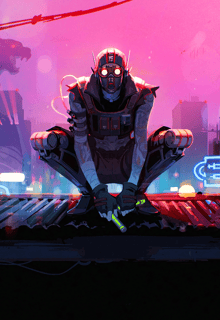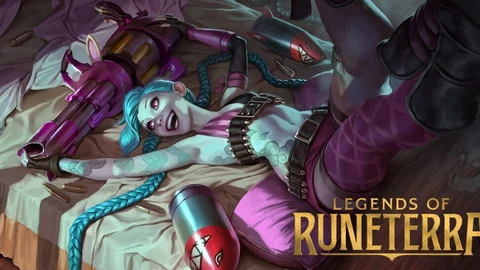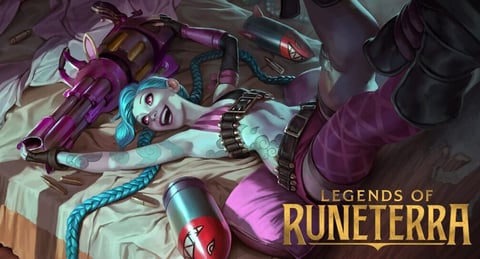
Legends of Runeterra, the online strategy card game based in the League of Legends world, is finally in open beta. On that occasion, we decided to take a sneak peek and see how it looks like pre-release.
Now, many would say that Legends of Runeterra is just riding on the wave of popularity brought by other card games such as Blizzard’s Hearthstone. But will it sink or will it soar? Does it have the makings of an esport? To find out, we need to ask ourselves several important questions.
Is it easy to learn?
Many online games, including some esports titles, suffer from lack of a proper tutorial. Looking at you, Dota 2! You call that a tutorial? No wonder people keep crossing your river! Anyway, back to card games.
Legends of Runeterra immediately makes a good impression in this regard. Upon first launch, the game greets you with a comprehensive tutorial. It is so comprehensive, in fact, that a player can learn what to do in a manner of minutes, even if they have never played a trading card game before.

In a series of simulated battles, the player is introduced to the game’s basic mechanics and some standard cards. The tutorial games are all scripted, so there is no chance you will sour your first foray into Legends of Runeterra by losing versus a bot.
But both Hearthstone and Magic: The Gathering Arena have the same thing, right? Which brings us to the next question:
Does it borrow good mechanics from other games?
Picasso once said that good artists copy and great artists steal. The strategy card game genre is not new, and many mechanics have been tried and tested throughout the years. The importance is to know what is good and what is not.
Legends of Runeterra doesn’t steal, but it incorporates. Luckily, the developers behind it seem to know enough not to randomly copy mechanics from other games with no semblance of cohesion.
Let’s break it down:

If you have seen at least ONE card game in your life, this is a familiar sight. But after playing a game or two, here are some mechanics we’ve seen in other titles of the same genre:
- Two separate lanes: from Valve’s Artifact
- Mana indicator going up with each turn: from Blizzard’s Hearthstone
- Attack and defense phases, resolving blocking: from Wizards of the Coast’s Magic: The Gathering Arena
Champions having their own skills is present in pretty much all, so we’re not calling it “borrowed” as much as “the current standard”.
Don’t get us wrong, this is all a compliment. Riot Games knew what worked and what was interesting and put it in Legends of Runeterra. They willingly chose to implement these staple mechanics instead of Artifact’s crazy triple lane combat for example, which many found confusing.
But that is not enough. What we also need to know is...
What does it have that’s unique?
Two pieces of original thought stand out in Legends of Runeterra so far. The first one is the Champion leveling mechanic. Unlike Artifact’s item-based enhancement, each Champion card in Legends of Runeterra has a unique leveling requirement. When this requirement is fulfilled, the Champion levels up. Their stats increase by a small amount.

This mechanic generally favors keeping your Champions alive and adopting a certain type of gameplay for your deck. While some would find it restrictive, no two level-up requirements are the same, so you’re bound to find something that suits you.
The second original mechanic will have everyone playing Hearthstone and MGTA clutch their pearls. It’s about Mana. A core principle in strategy card games is resource optimization. This means that you always want to spend the maximum amount of Mana you have in your turn. If you spend 9 out of your 10 points of Mana, it means you basically wasted 1 mana since it will get refilled on your next turn. Many esports pros have been praised for their optimization skills. But Legends of Runeterra went all “Nah. Let’s do this differently.”
Enter the Spell Mana. If you do not spend all your Mana last turn, it up to 3 Mana carries over to the next one, and you can use it for spells. This means you can prime yourself for costly spells early on or simply make sure you have something extra to protect yourself.
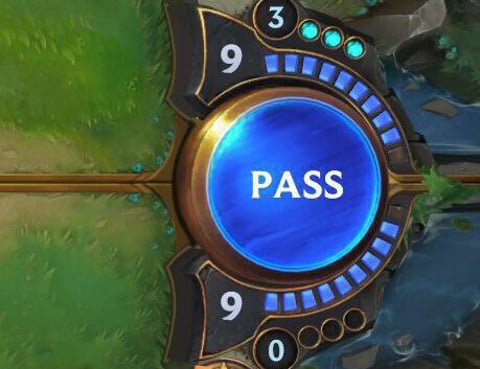
This new mechanic also eliminates some of the RNG issues that come with drawing randomly from a deck. Getting a costly spell early on can then be your strategy, not your curse.
But we’re not here just for mechanics and optimization! Last but not least...
Is it pretty?
This is where Legends of Runeterra shines the most. Riot Games is a developer always known for fluid animation and captivating graphics, and for this, they delivered big time. The game is packed with voice lines from your favorite Champions and everything about it feels refined and smooth.
Good art is the soul of any card game, and Legends of Runeterra doesn’t disappoint. Every card is like a unique painting worthy of adorning your walls:
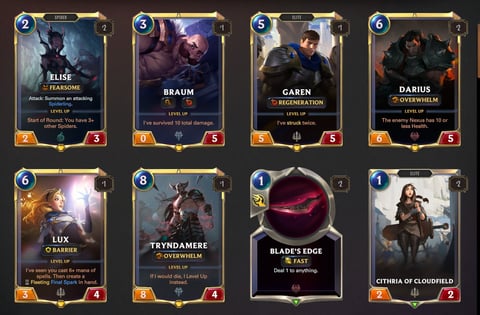
Everything, from the battlefields to the avatar portraits is lush with attention to detail. And let’s face it, a good-looking game makes you want to play more, right?
Finishing thoughts
This is just an initial look into Legends of Runeterra, as a complete newcomer would see it. We haven’t touched upon decks, the emerging meta, or anything in ranked play. We also haven’t talked about the Expeditions, the format using cards you don’t own yet.
So far, the game appears like a solid work. It is showing very few bugs and appears like a good title to enter the genre. Only time will tell if it will stay niche or develop into a grander esports scene.


